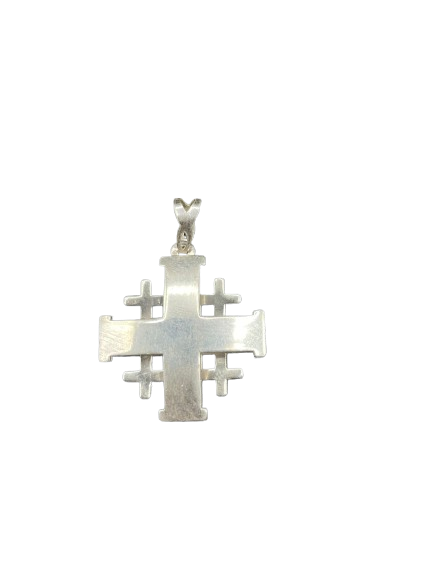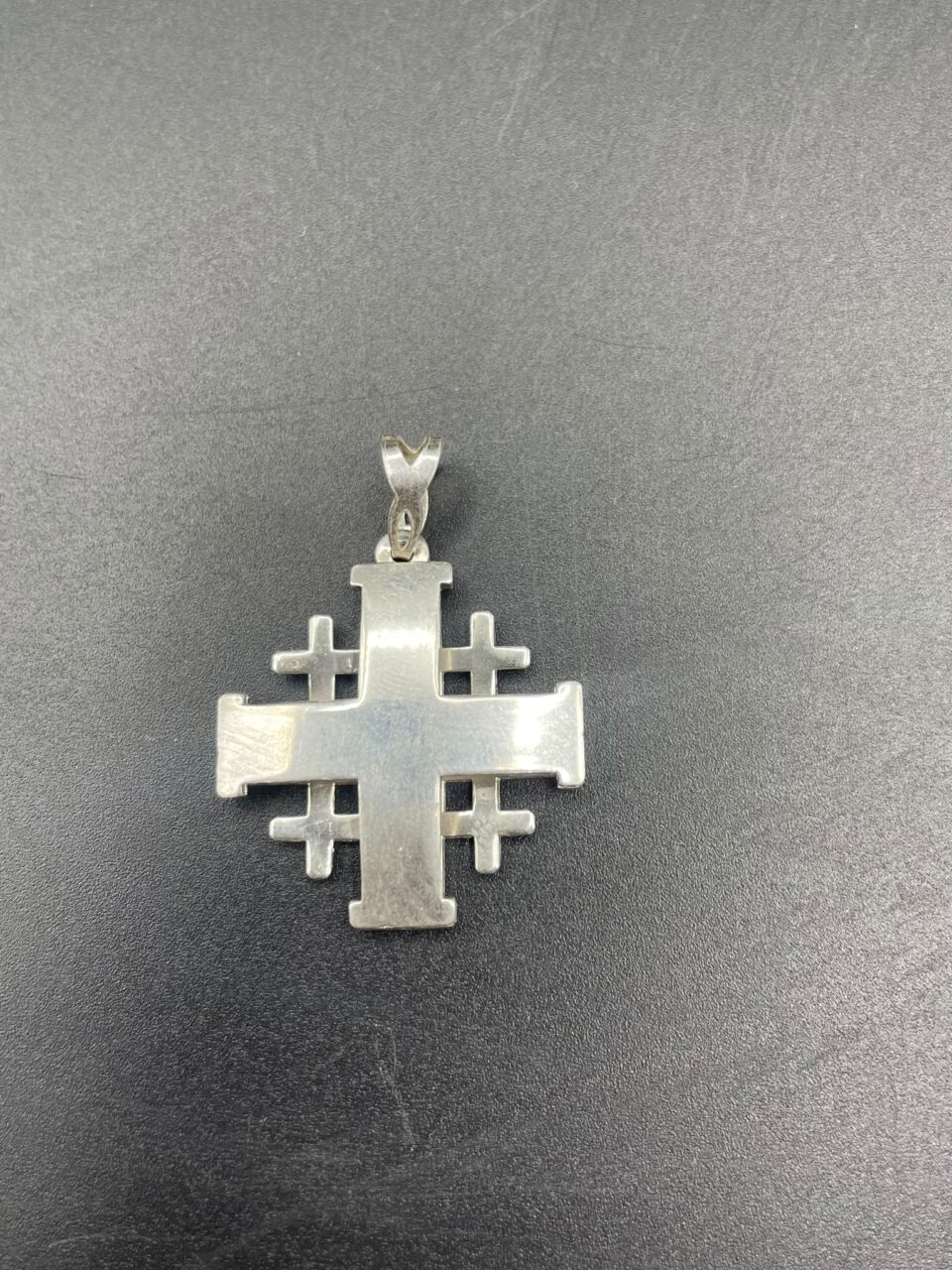Shiny Jerusalem crusader cross 35mm
The Jerusalem Cross Story
Wearing the Jerusalem Cross isn’t just a trend, but also a deep symbolism, it is one of the most recognizable religious symbols in the world and is one of the central themes in Christianity.
Here are some interesting facts about it:
1- The central cross stands for Christ and the four smaller crosses stand for the 4 evangelists John, Luke, Mark, and Matthew.
2- The 5 crosses represent the five nations that figured in The Crusades: Great Britain, France, Spain, Germany, and Italy.


3- The large cross represents Christ as the strength at the center of Christianity and the smaller crosses as the 4 corners of the earth to which the faith spread.
4- The crosses represent the wounds that Christ suffered when He was crucified; the central cross for the wound on His side, and the 4 smaller crosses for the wounds on His hands and feet.
5- Crusaders used the Jerusalem Cross, displaying it on their papal banner from Pope Urban II. Godfrey de Bouillon, a leader in the Crusades, later adopted it as his personal coat of arms. He became the first ruler of Jerusalem after successfully driving out Muslims in the First Crusade (1099).
The Jerusalem Cross is more than just an emblem; it is steeped in rich historical and cultural significance. Emerging during the period of the Crusades, the cross symbolizes both the religious fervor of the time and the complex interplay of faith and power. The large central cross is often interpreted as representing Christ himself, while the four smaller crosses symbolize the spread of his teachings to the continents of Europe, Asia, Africa, and beyond. Its design encapsulates the missionary zeal of the Crusader knights who sought to reclaim the Holy Land, and it stands as a testament to Christianity’s enduring presence in Jerusalem, a city revered by three major world religions.
In art and religious iconography, the Jerusalem Cross can appear in various forms, including stained glass windows, frescoes, and embroidered vestments. Each execution of the cross serves to convey the message of salvation and the universality of Christ’s mission. The shiny colored Jerusalem Cross, in particular, introduces an element of vibrancy that can be both captivating and reflective. For instance, the use of bright reds and golds can symbolize the blood of Christ and the glory of God, creating a striking contrast that draws the eye and invites contemplation.
Additionally, the colors chosen for the cross can carry specific meanings within different Christian traditions. For example, green might symbolize rebirth and resurrection, while purple can denote penitence or the royal nature of Christ. This multifaceted use of color within the context of the Jerusalem Cross allows for a deeper engagement with the spiritual themes it represents. It becomes a canvas for personal interpretation, inspiring believers to connect with their faith on multiple levels.
The Jerusalem Cross has transcended its historical origins to become a symbol of hope and unity among Christians worldwide. Many denominations adopt it as a badge of faith and a reminder of the call to service. Its association with pilgrimages to the Holy Land adds to its allure, as many seek to trace the footsteps of early Christians. The shiny colored version, therefore, not only serves as a religious artifact but also as a modern expression of identity for those who wear or display it.
In contemporary times, the Jerusalem Cross is also embraced in various forms of cultural expression, including jewelry, home décor, and tattoo art. Each adaptation allows individuals to express their faith in a way that is personal and meaningful. The vibrant colors of these pieces can represent individual journeys of faith, community, and shared values. Whether as an adornment or a cherished keepsake, the shiny colored Jerusalem Cross continues to inspire and unite people, reminding them of the core tenets of love, compassion, and evangelism inherent in Christianity.
Moreover, the Jerusalem Cross has found its place in ecumenical movements, symbolizing the unity of diverse Christian traditions. It embodies the idea that, despite differing beliefs and practices, there exists a common thread that binds all followers of Christ. By embracing the Jerusalem Cross in its colorful variations, believers participate in a larger narrative of faith that transcends geographical and denominational boundaries.
In summary, the shiny colored Jerusalem Cross serves as a rich symbol of Christian faith, history, and community. Its vibrant hues enhance its visual impact while deepening its spiritual significance. As a testament to the enduring legacy of Christianity, this emblem invites believers—past, present, and future—to reflect on their shared mission of spreading hope, love, and unity in a diverse world. Its relevance continues to resonate today, making it both a cherished artifact and an aspirational symbol for Christians around the globe.











Reviews
There are no reviews yet.